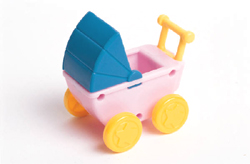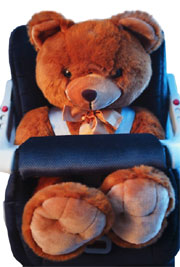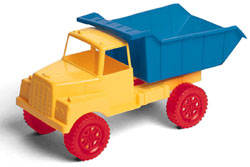- What is Sudden Infant Death Syndrome (SIDS)?
- Statistics
- Risk Factors
- Progression
- Symptoms
- Clinical Examination
- How is it Diagnosed
- Treatment
- References
What is Sudden Infant Death Syndrome (SIDS)?

Statistics
Over the past two decades the incidence of SIDS has declined dramatically following the introduction of campaigns aimed at reducing the risk of SIDS. Nevertheless, it continues to be the biggest cause of death of infants aged between 1 month and 1 year in developed countries. In Australia, the incidence of SIDS is 0.84 per 1,000 live births. The incidence of SIDS varies between nations, with Japan and The Netherlands having the lowest reported SIDS rates (0.4 and 0.3 per 1,000 live births respectively). 90% of SIDS deaths happen in the first 6 months of life, with a peak age of 2 to 4 months. Boys are more likely to die of SIDS than girls. There is also a higher rate of SIDS within certain racial or ethnic groups, including Indigenous Australians, New Zealand Maoris, African Americans and Native Americans.
Risk Factors
- Laying baby to sleep on the tummy or side (prone or side sleeping position)
- Exposure to tobacco smoke before and after birth
- Soft sleeping surfaces
- Overheating/ overwrapping
- Bed sharing, particularly with mothers who smoke, infants younger than 11 weeks, alcohol consumption, and on a couch or sofa
- Previous SIDS death in a sibling
- Premature or low birthweight infants
- Not using a soother/pacifier at sleep time
- Not breastfeeding
Other causes of sudden unexpected death in infancy
- Some abnormalities of heart rhythm
- Metabolic diseases, such as medium-chain acetyl coenzyme A dehydrogenase deficiency (MCAD)
- Homicide/ fatal child abuse
- Sudden and overwhelming infection, such as pneumococcal or meningococcal septicaemia
- Seizure causing the infant to stop breathing
Symptoms

The sudden death of an infant is devastating and distressing for the parents, siblings, and everyone around them. Immediate reactions may be that of shock, denial, numbness or disbelief. Some of the more common emotions felt include guilt, anger, blame and fear. It is not uncommon for parents to want to seek their own explanations for the tragedy or blame themselves for the death. Nevertheless, it is important to remember that SIDS is nobody’s fault.
Clinical Examination
A doctor will need to examine your baby fully to confirm death and look for signs that may point towards a cause of death. Important things to note are the position of the infant, type of bed or crib, amount and position of clothing and bedding, and room temperature. Infants who die of SIDS are usually well developed and well nourished, with no signs of disease. There may be a frothy blood-tinged discharge from the nose or mouth, and he or she may appear pale and waxen with a bluish tinge to the lips.
How is it Diagnosed
SIDS is a diagnosis of exclusion, which means that it can only be diagnosed after all other causes of death have been ruled out. Often, this can only be done after full investigation, autopsy, examination of the death scene and review of the history. In all cases of sudden unexpected death where the cause of death is unable to be determined, the law requires that police must attend and report the death to the coroner. It is the coroner’s duty to establish the cause of death. In doing so, he/she will have to investigate the circumstances surrounding the death and may perform an autopsy. This is to be sure that the death is due to a natural cause such as SIDS. In addition, your child may also need to have X ray imaging and samples (blood, hair, tissue etc.) taken for testing. The police may also need to examine the room and cot that the infant was in when he or she died.
Treatment
Support for parents

SIDS prevention
- All infants should be placed to sleep on their backs for every sleep. Campaigns that have advised avoiding prone sleeping have significantly reduced the incidence of SIDS.
- Maternal smoking during pregnancy and infant exposure to tobacco smoke should be avoided.
- Infants should be placed to sleep on a firm surface.
- Soft objects and loose blankets should be kept out of the crib.
- The infant’s head should be uncovered. If blankets are used, the infant’s feet should be placed at the bottom of the crib and blankets tucked in around the mattress to prevent them from covering the infant’s head.
- Infant’s should sleep in a crib in the parent’s room for the first six months. Infants should not share a bed or sofa.
- Avoid overheating. Infants should not sleep next to a radiator, heater or in direct sunshine.
- The use of a pacifier may reduce the risk SIDS. For breastfeeding infants, delay its use until after 1 month of age, so as not to interfere with the establishment of breastfeeding.
- There is no evidence to support the role of home monitors for preventing SIDS.
References
- Bergman A, Beckwith J, Ray C (eds). Sudden Infant Death Syndrome. The Second International Conference on Causes of Sudden Death in Infants. Seattle: University of Washington Press; 1970.
- Krous HF, Beckwith JB, Byard RW, Rognum TO, Bajanowski T, Corey T, et al. Sudden infant death syndrome and unclassified sudden infant deaths: A definitional and diagnostic approach. Pediatrics. 2004; 114(1): 234-8.
- Robinson M, Roberton D. Practical Paediatrics (5th edition). Melbourne: Churchill Livingstone; 2003.
- Moon RY, Horne RSC, Hauck FR. Sudden infant death syndrome. Lancet. 2007; 370(9598): 1578-87.
- Australian Bureau of Statistics. Causes of Death, Australia, 2006. Journal [online]; Cat. no. 3303.0: Available from URL: http://www.ausstats.abs.gov.au/ ausstats/ subscriber.nsf/ 0/ A8CB1F4BD5385085CA2574100010092A/ $File/ 33030_2006.pdf
- Creery D, Mikrogianakis A, Creery D, Mikrogianakis A. Sudden infant death syndrome. Clin Evid. 2005: 6(13): 434-43.
- Hymel KP. Distinguishing sudden infant death syndrome from child abuse fatalities. Pediatrics. 2006; 118(1): 421-7.
- National SIDS Council of Australia. For SIDS families: Some answers to your questions [online]. SIDS and Kids. 2001 [ cited 8 October 2008]. Available from URL: http://www.sidsandkids.org/ pdf/ SU3028-families.pdf
- Li DK, Willinger M, Petitti DB, Odouli R, Liu L, Hoffman HJ. Use of a dummy (pacifier) during sleep and risk of sudden infant death syndrome (SIDS): Population based case-control study. BMJ. 2006; 332(7532): 18-22
All content and media on the HealthEngine Blog is created and published online for informational purposes only. It is not intended to be a substitute for professional medical advice and should not be relied on as health or personal advice. Always seek the guidance of your doctor or other qualified health professional with any questions you may have regarding your health or a medical condition. Never disregard the advice of a medical professional, or delay in seeking it because of something you have read on this Website. If you think you may have a medical emergency, call your doctor, go to the nearest hospital emergency department, or call the emergency services immediately.







